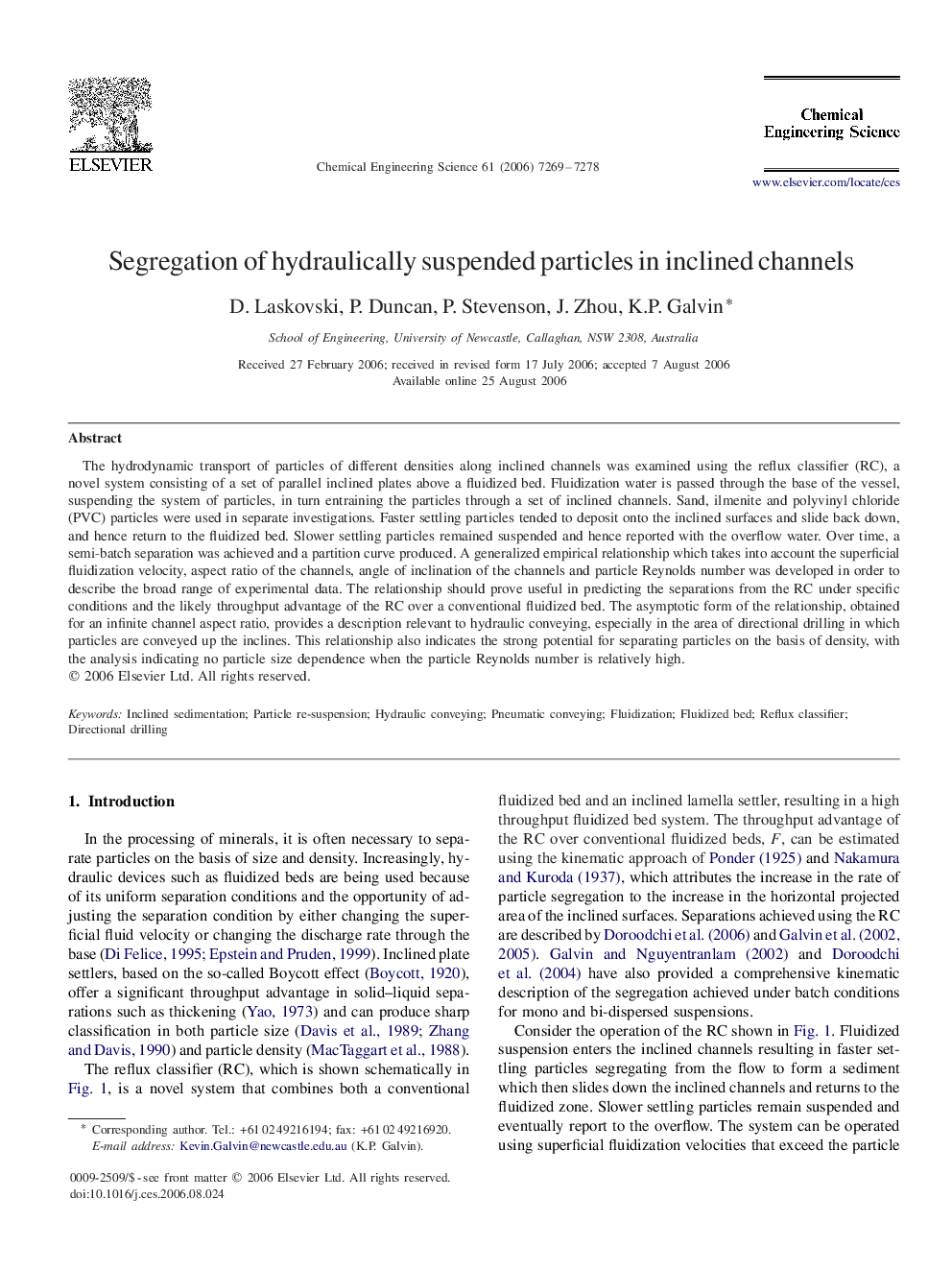| Article ID | Journal | Published Year | Pages | File Type |
|---|---|---|---|---|
| 159316 | Chemical Engineering Science | 2006 | 10 Pages |
The hydrodynamic transport of particles of different densities along inclined channels was examined using the reflux classifier (RC), a novel system consisting of a set of parallel inclined plates above a fluidized bed. Fluidization water is passed through the base of the vessel, suspending the system of particles, in turn entraining the particles through a set of inclined channels. Sand, ilmenite and polyvinyl chloride (PVC) particles were used in separate investigations. Faster settling particles tended to deposit onto the inclined surfaces and slide back down, and hence return to the fluidized bed. Slower settling particles remained suspended and hence reported with the overflow water. Over time, a semi-batch separation was achieved and a partition curve produced. A generalized empirical relationship which takes into account the superficial fluidization velocity, aspect ratio of the channels, angle of inclination of the channels and particle Reynolds number was developed in order to describe the broad range of experimental data. The relationship should prove useful in predicting the separations from the RC under specific conditions and the likely throughput advantage of the RC over a conventional fluidized bed. The asymptotic form of the relationship, obtained for an infinite channel aspect ratio, provides a description relevant to hydraulic conveying, especially in the area of directional drilling in which particles are conveyed up the inclines. This relationship also indicates the strong potential for separating particles on the basis of density, with the analysis indicating no particle size dependence when the particle Reynolds number is relatively high.
